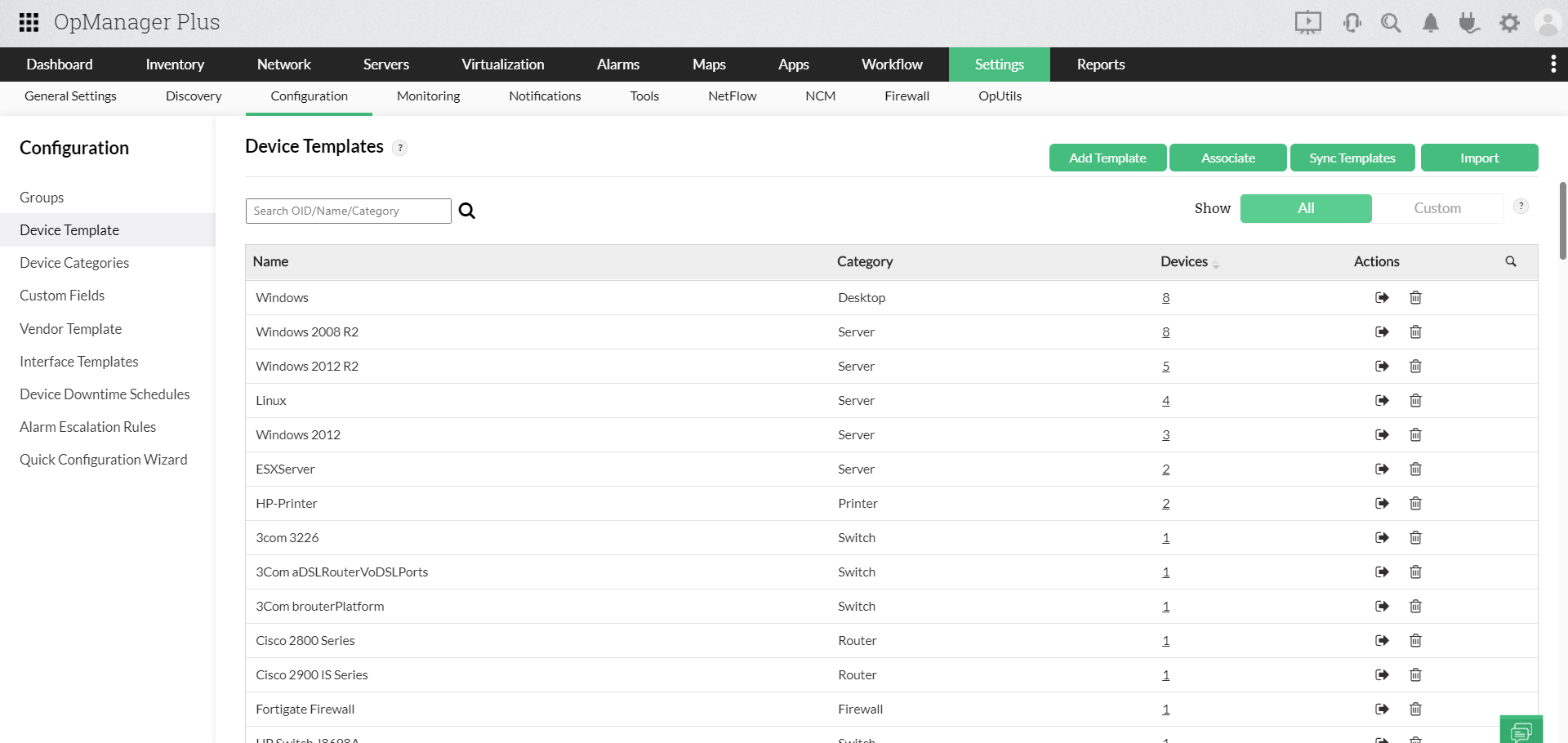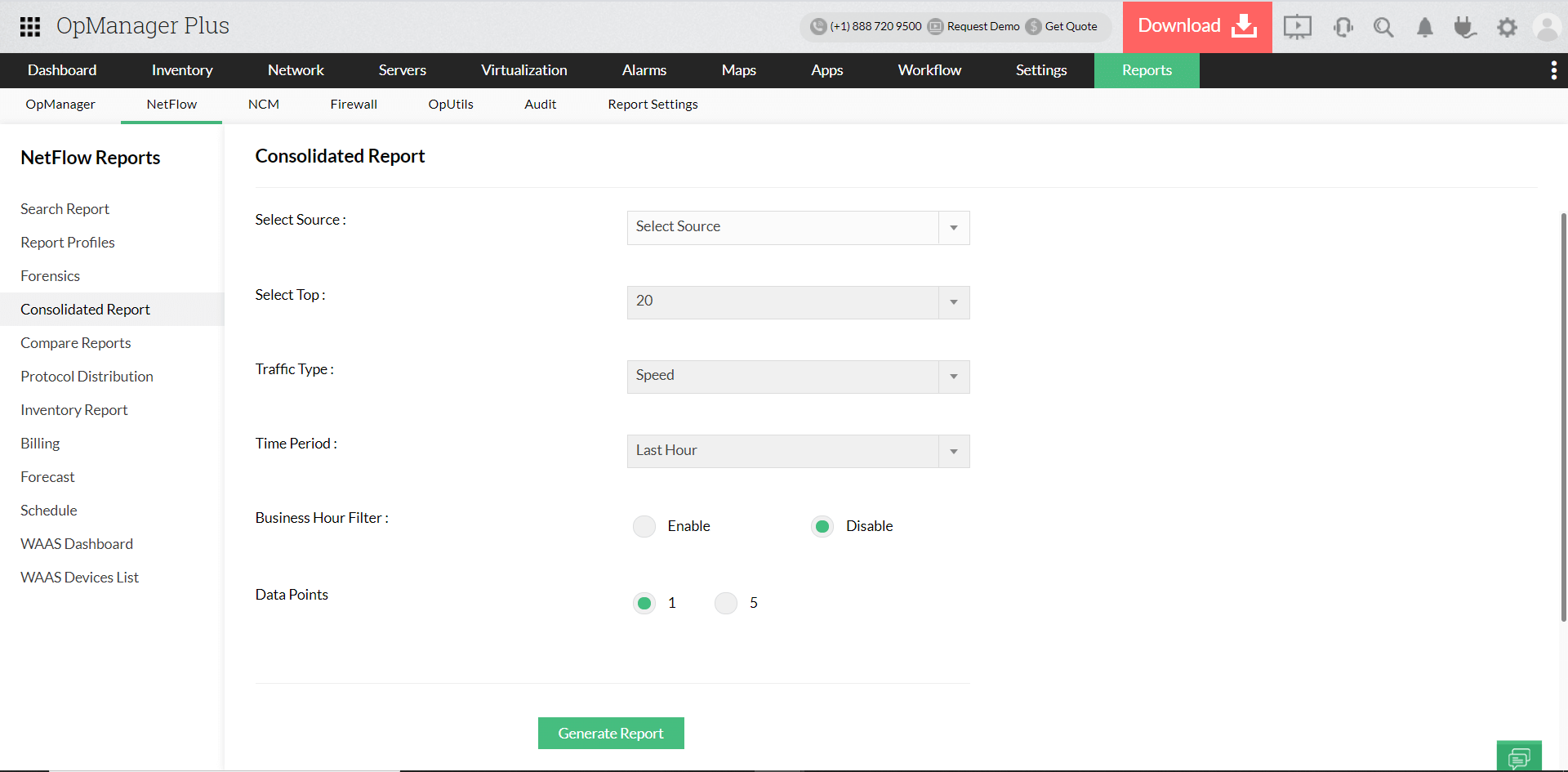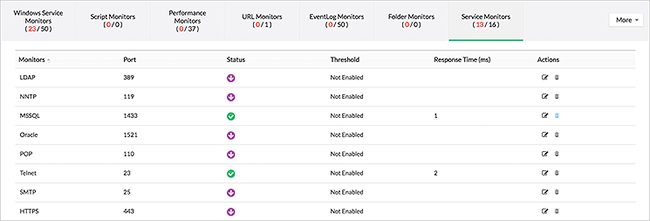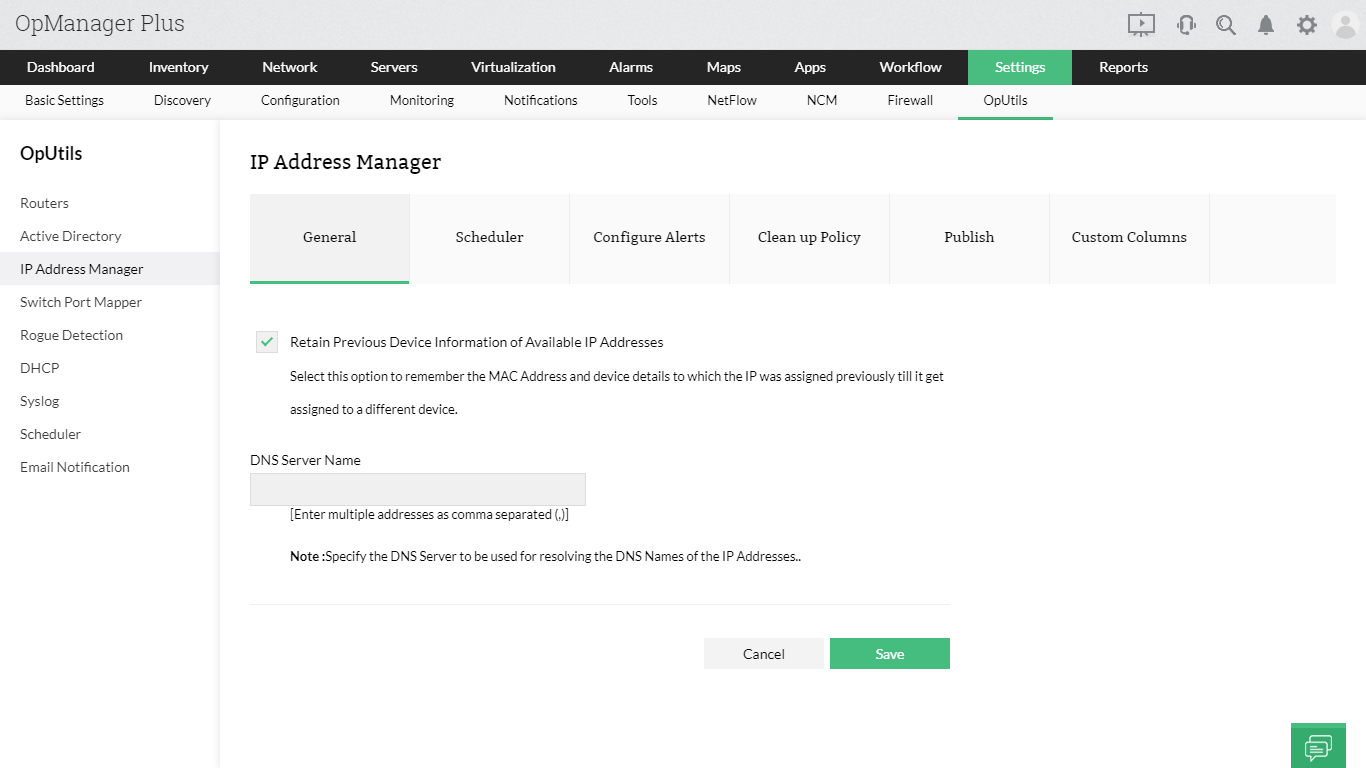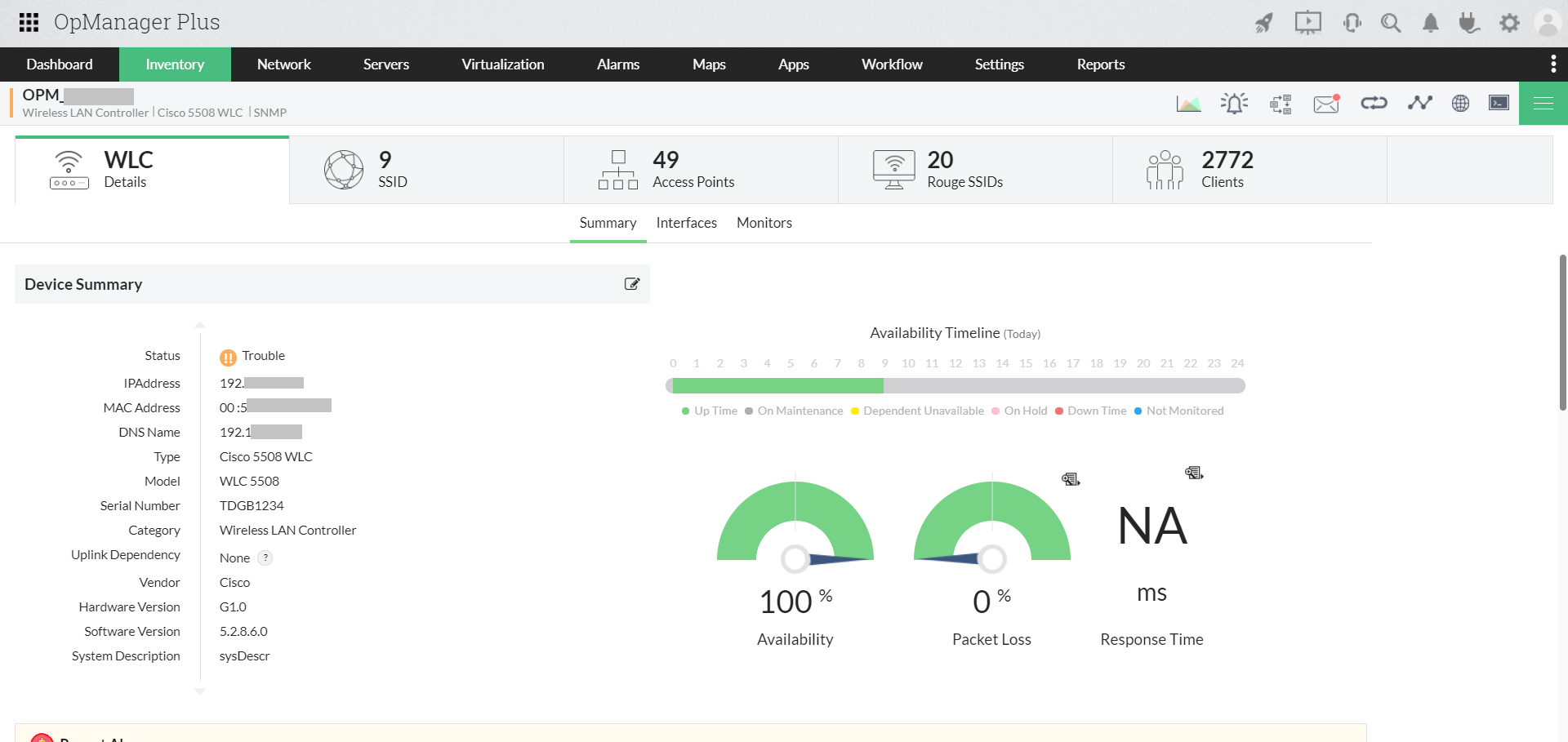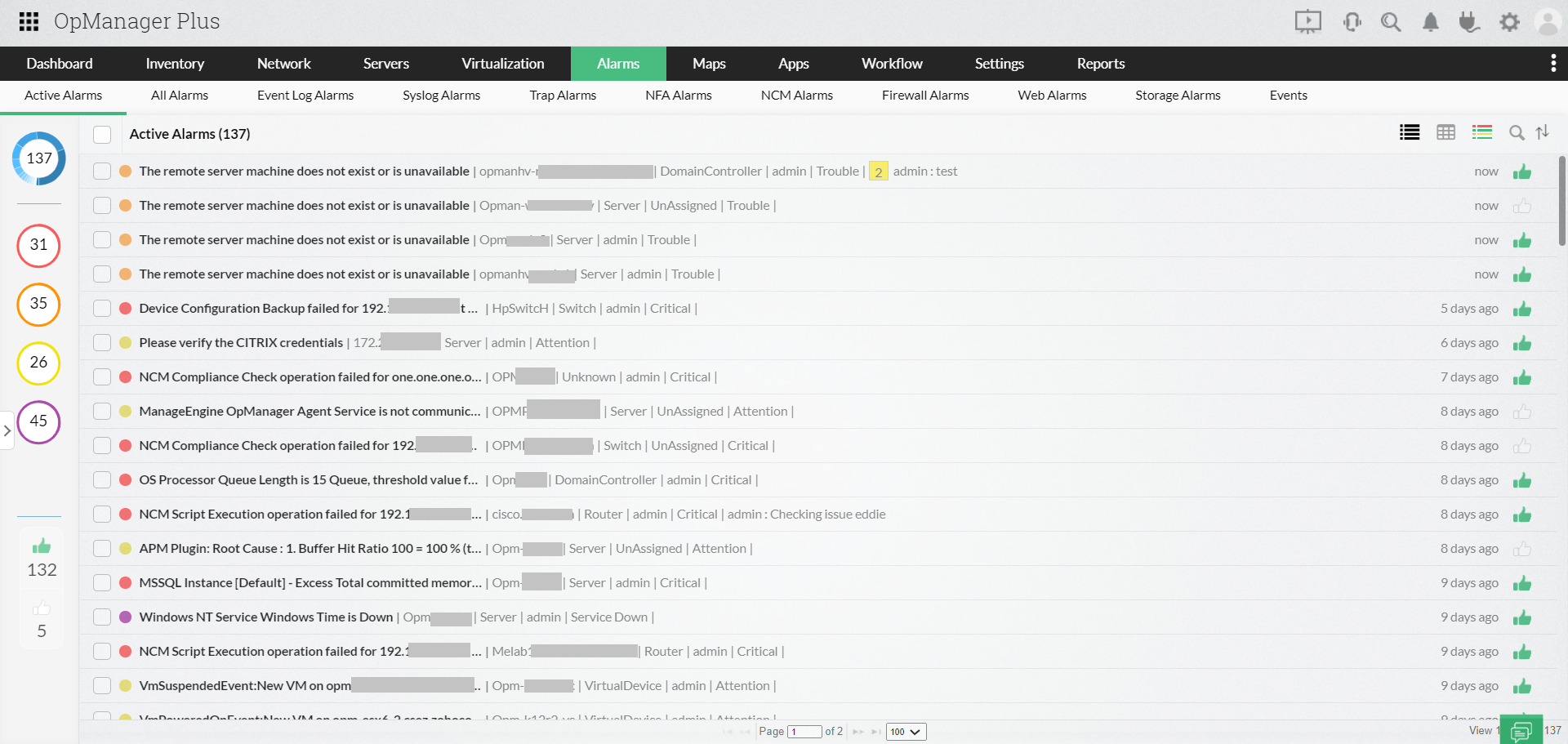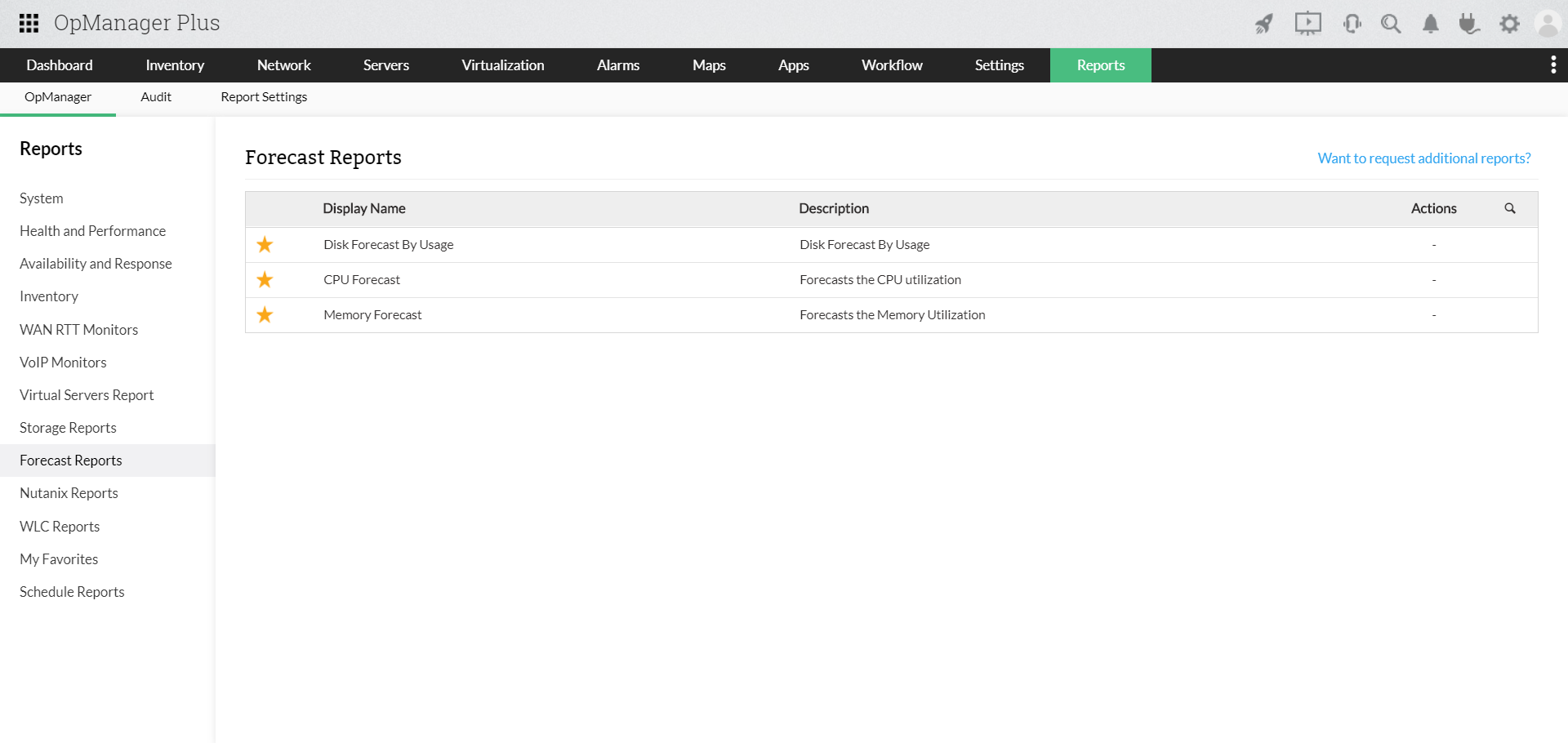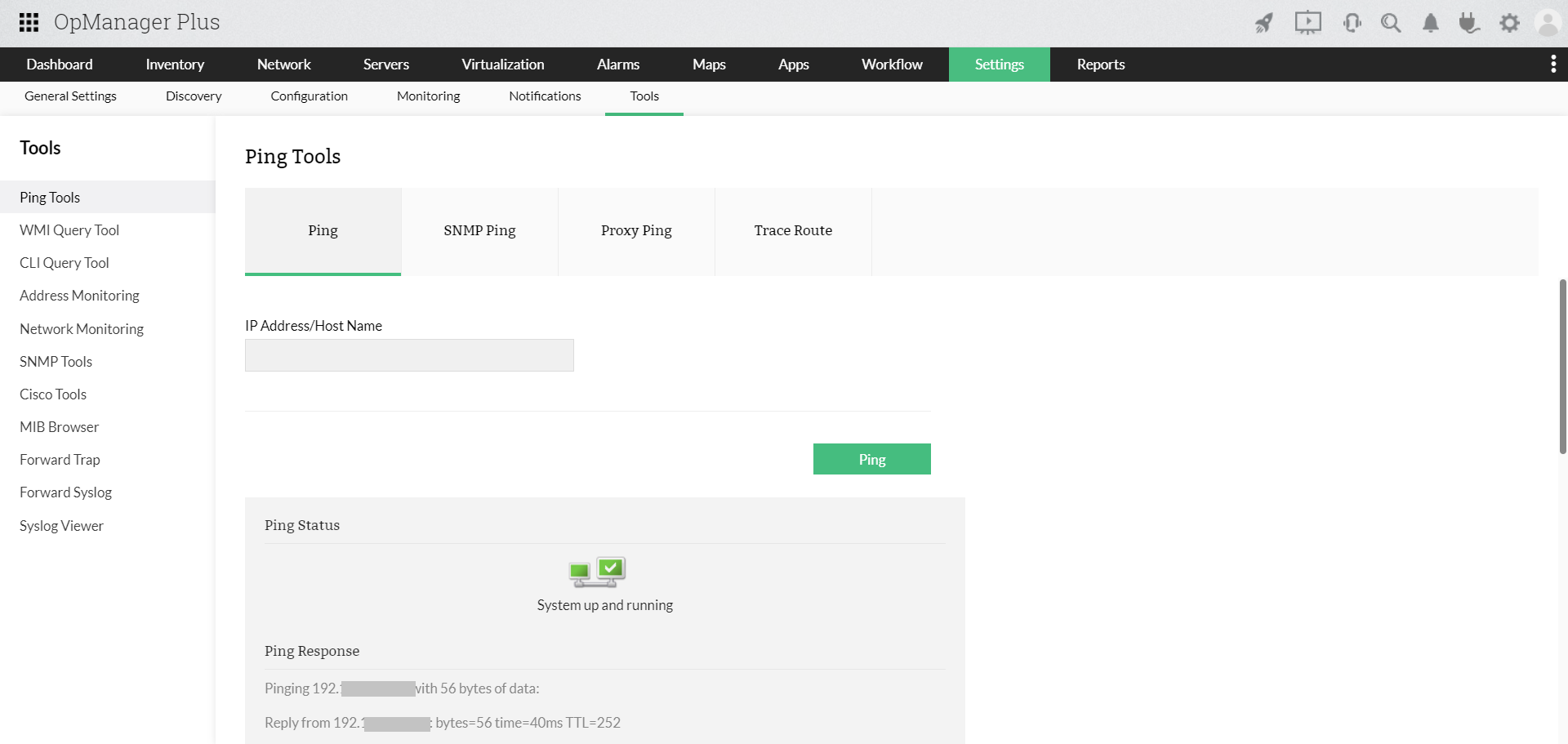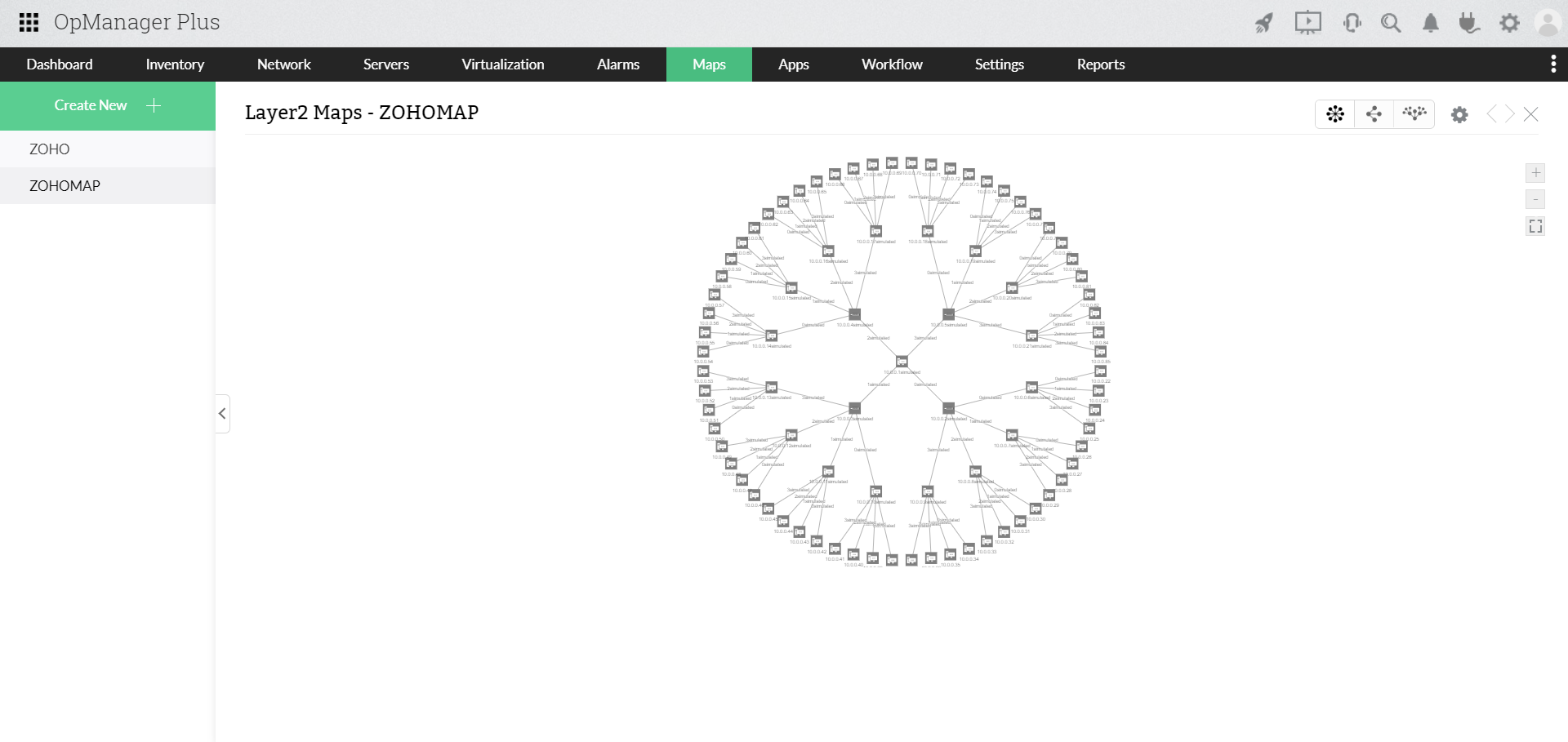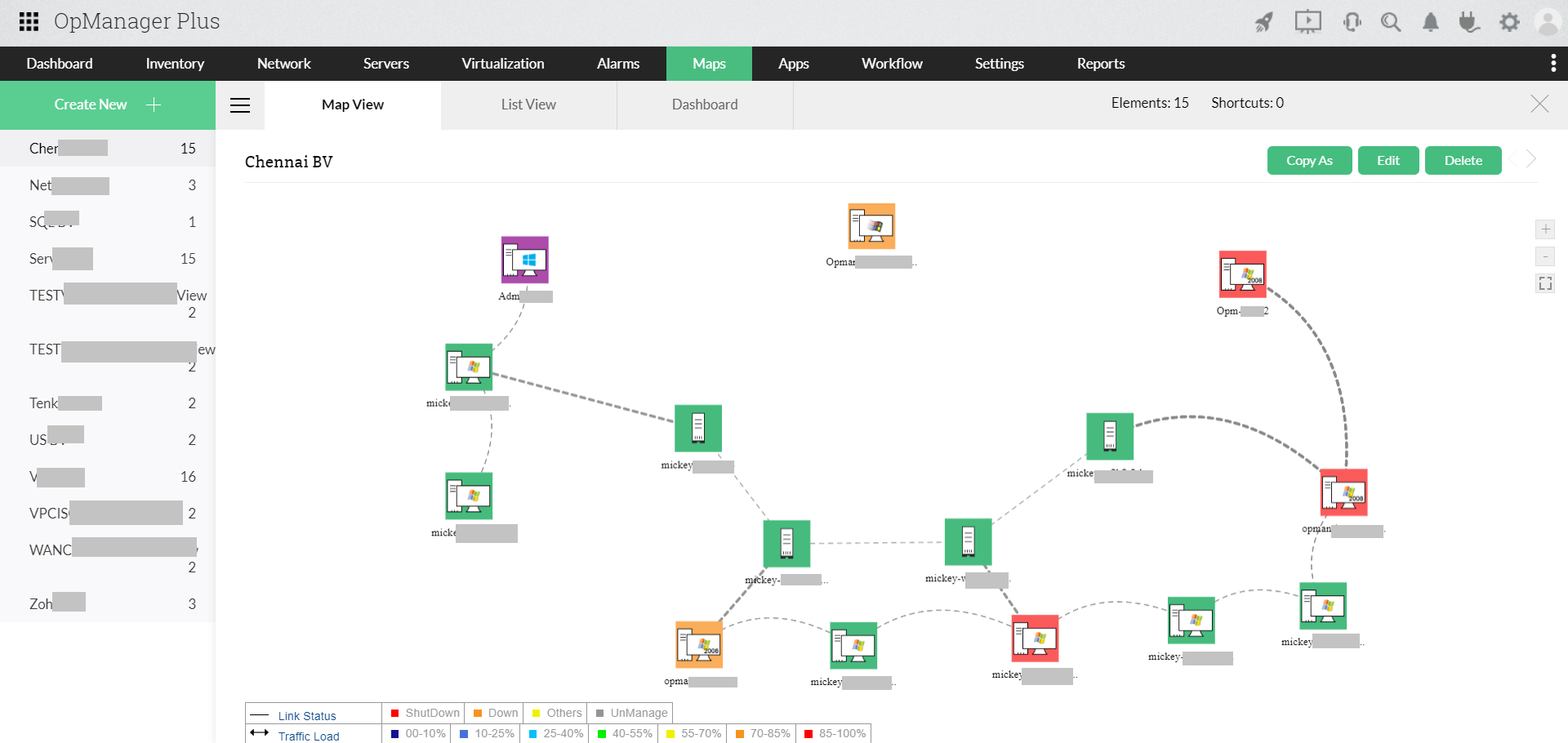Unified network management
A secure, healthy, and optimally functioning IT network serves as the backbone for any successful business. Managing modern-day network infrastructure is an increasingly complex task, largely due to the mix of new devices and applications. Along the same line, network management has become more important over the years, and is only expected to continue to grow; the market for network management is forecasted to be around $10.2 billion by the year 2023.
Network management functions cover several areas, which can be loosely classified into performance management, configuration management, network security management, and fault management. The overarching goal of network management is to ensure that network resources are effectively made available to users and consumed as efficiently as possible.
- Performance management
- Configuration management
- Security and compliance management
- Fault management
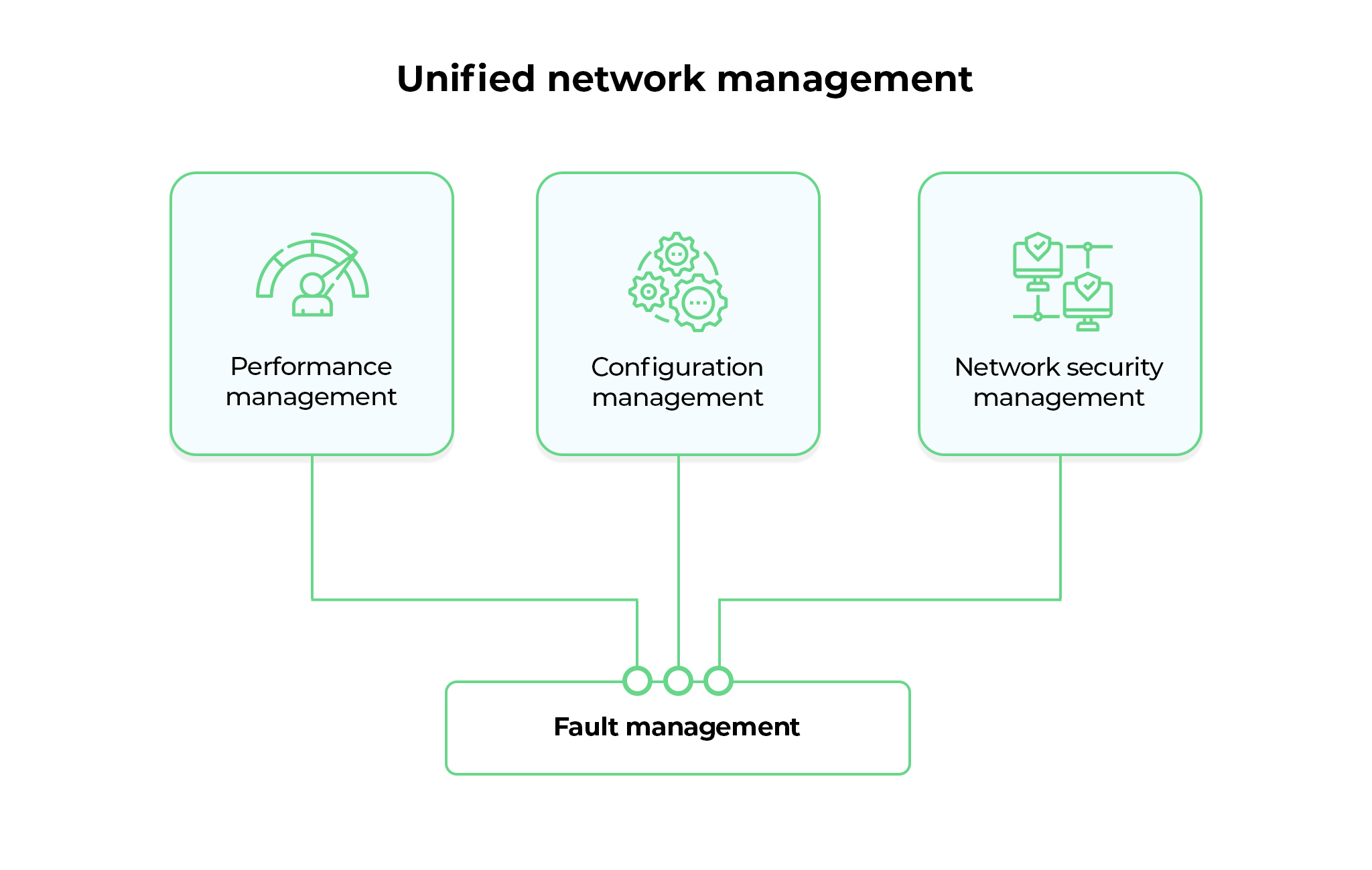
Managing both physical and virtual devices
OpManager Plus, a unified IT operations management and data center infrastructure management (DCIM) solution monitors a variety of physical devices, including servers, firewalls, ports, routers, switches, printers, and access points, as well as virtual devices, including VMware, Xen, Hyper-V, and Nutanix. Using dedicated real-time topology maps, you can easily understand the relationships between the host, virtual machines (VMs), and virtual networks.
Customizable device and interface templates
With over 9,000 device templates, 53,000 vendor templates, and 292 interface templates, OpManager Plus ensures your devices and interfaces are adequately classified, and assigns a set of default monitors upon discovery.
Traffic and bandwidth management
OpManager Plus monitors traffic and bandwidth consumption using advanced flow technologies such as J-flow and F-flow, allowing you to gain a deeper understanding of your bandwidth performance. In addition, the traffic information of interfaces and associated applications can also be tracked to draft traffic policies that best suit your requirements.
Monitor individual processes and services
OpManager Plus, an IT infrastructure management and observability solution comes with out-of-the box support for availability monitoring of all Windows and Linux services. It can be configured to alert if any important services fail, and in the unlikely event of service issues, OpManager Plus can be configured to perform activities such as restarting a service, rebooting the machine, or alerting a network admin.
Mitigate overutilization of system resources by carefully monitoring system processes such as CPU utilization, memory utilization, etc. In case of abnormal process behavior, you can set alarms or alert messages to notify network administrators to take action immediately.
Configuration management
Configuration and compliance management
Manage the configuration of your devices such as switches, routers, firewalls and other network devices by taking control of their entire life cycle of change management to guarantee a disaster-free network.
Ensure your devices stay compliant with industry-leading mandates like Cisco IOS, SOX, HIPAA, PCI, and other custom policies by doing something as simple as associating a compliance template.
Restrict users from making costly configuration mistakes by imparting custom created rule-based access, and in the event of a network disaster, deploy a rollback mechanism to quickly revert the network to working conditions.
Automated software update and backup
Prevent human errors by automating repetitive configuration tasks using script templates called configlets. Push software updates to respective devices from a central console. Perform manual, automated, or scheduled backups.
Network security management
Network security is an essential aspect of managing a network. Failing to comply with security standards can result in hefty fines and attract expensive lawsuits. OpManager Plus addresses your network security with features such as:
Firewall log monitoring
OpManager Plus functions as a unified threat management network, allowing you to gain visibility into the rules written in your firewall, and improve its performance by identifying rule anomalies. Understand security threats and traffic behavior through detailed log reports. Identify users connected by your virtual private network (VPN), monitor their usage and proxy server logs, and get detailed VPN and proxy reports too.
Security compliance management
Perform security audits on the configuration setup of your firewall, and get detailed reports on any security loopholes. Stay compliant with regulatory mandates such as PCI-DSS, NERC-CIP, ISO 27001, SANS, and NIST.
IP address screening and rogue IP detection
Discover and maintain an inventory of all your IPv4 and IPv6 addresses, and obtain their statuses by scanning your subnet. Verify all known devices, and block unauthorized or rogue IP addresses from accessing your network.
Wireless access point monitoring
Monitor WLAN controllers for bandwidth-related statistics, and drill down further to view reports on WLAN controllers, SSIDs, and quality of service (QoS). Identify rogue SSIDs, the number of clients connected to the network, and detailed information on access points.
There are several difficulties in trying to monitor a network with multiple tools, but OpManager Plus provides a unified network management process to drastically boost your business efficiency.
Fault identification and management
The most important function of a unified network monitoring tool today is to keep the network issue-free. This can be effectively achieved only by proactively taking measures to identify and address issues before they get out of hand.
OpManager Plus offers unified infrastructure monitoring by employing advanced features that monitor your network for signs of failure and notifies you in advance, allowing your team to take proactive measures in rectifying any problems, thus ensuring a smooth ITOM experience.
Workflow automation
Workflow is a simple drag-and-drop process builder that can be configured to troubleshoot L1 and L2 activities, and other repeated tasks such as revert configurations, start and stop a process or service, etc.
Alert-based notification
OpManager Plus, a powerful IT operations management tool creates alarms and notifications to indicate the faults identified. Multilevel, color-coded thresholds help identify faults at various levels of your network, which are distinguished based on severity for events and alarms.
Alarm escalation
You can bring attention to a possible ignored critical alarm by escalating it to a super admin or upper management. This will ensure timely action is taken, and possibly save your network from certain doom.
Added benefits offered by OpManager Plus
Network provisioning
OpManager Plus as a full stack infrastructure observability tool, continually observes the historical trends from the reports on memory utilization, bandwidth usage, and device upgrades, presenting the data in the form of forecast reports. This helps in capacity planning and forecasting the future trajectory of infrastructure performance.
Troubleshooting tools
Troubleshoot basic performance issues by employing OpManager Plus' built-in tools available free right out of the box.
Leveraging the visualization prowess of OpManager Plus
Layer 2 Maps:
Layer 2 Maps helps you in drawing a logical network topology diagram with a seed router at its core. This feature quickly and automatically discovers, maps, and reports on all the devices.
Business View:
Business View allows you to create custom network maps with the business they are catering to. This graphical representation of devices can be used to logically group devices and perform actions on them such as draw reports, apply configuration changes, etc.
Dashboard and NOC view:
Dashboard and network operations center (NOC) views provide an at-a-glance overview of the real-time status of your network. Armed with highly customizable widgets, an assortment of pie-chart, bar diagrams, and exhaustive graphs, dashboards provide a clear representation of monitored data.
NOC views keeps the business running by notifying the NOC team about the availability and health of critical devices, making it easier to ensure continual uptime and also streamlines the process of network operations management.
If you're new to OpManager Plus, try our free, 30-day trial, and experience the power of a unified network management tool.
